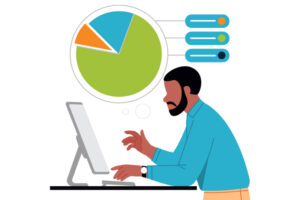Resource management used to be thought of as part and parcel of the project portfolio management (PPM) setup, relegated to being just another aspect to managing a project from planning to execution. And, while technically this is correct, when you don’t give resource management your full focus, your projects can really suffer. That’s why a lot of companies now think of the resource side of their projects as an entire project area that requires its own, deliberate focus right from the beginning of a project.
At ProSymmetry, we prefer the term resource portfolio management (RPM) to the traditional, project portfolio management (PPM). Here’s why.
Are Resource Portfolio Management (RPM) and Project Portfolio Management (PPM) the same thing? Does a name matter?
Of course, we shouldn’t be too concerned about labels. As long as everyone is on the same page about what language you use in your organization, that’s a start. The important point is what you are focusing on when it comes to planning and executing your projects in the most efficient and effective way possible. But there is a difference between these two terms (resource portfolio management and project portfolio management) in what they primarily focus on. For that reason, it’s important to understand the difference so you can make sure your organization is concentrating on the right areas that lead to project success.
Resources (and therefore resource management) are the most essential component to effectively managing your projects. The resources of an organization include your employees and their varied skillsets, knowledge and experience, along with equipment and available time. All of these are limited and must be managed correctly in order to get the most out of them and bring your project to a successful conclusion on time.
Yes, project portfolio management is equally concerned with the successful completion of your projects within deadlines. So, let’s briefly look at how the two terms, RPM and PPM, go about making your project a success—to see where they cross paths, and where they differ.
Project Portfolio Management deals with projects on a task level
Project management is concerned with the series of tasks that make up a project. PPM is concerned with the management of all projects in an organization on a larger, broader scale. So, while PPM takes into account several projects at once, over a period of time, it still boils down to task lists and management of those tasks relative to time, resources, finances, etc.
Using PPM tools makes it possible to handle several projects at once that span long stretches of time (a calendar year, perhaps). However, the major drawback to PPM tools is the lack of visibility they offer. This prevents project managers from being able to plan their projects (and their resources) and to react to changes quickly enough when they happen.
Resource Portfolio Management looks at resources from a project level
Resource portfolio management focuses on an organization’s resources in a broader project overview also. But RPM is primarily concerned with resource reporting, forecasting and modeling; individual and portfolios of projects are viewed through this prism. This makes it easier for a project and resource manager to understand what their resource levels are for an entire calendar, rather than knowing what they have for each individual project, assignment or task. This allows them to avoid being blindsided by unforeseen events, or last-minute overlaps between projects where resources can become stretched. RPM focuses on managing resources across your portfolio to make sure projects are getting done.
Strategic Portfolio Management (SPM) brings PPM to meet your goals
Strategic Portfolio Management is the process of creating a strategy for the entire business and building the supporting projects, products, roadmaps and plans to execute that strategy. SPM is designed to produce an executable plan. It’s not just about the strategy and important decisions, but also whether and how the work gets done. It’s the portfolio of work that will help your business achieve that strategy’s goals.
When a business uses SPM, it makes sure all projects that are chosen to move forward will help execute a specific strategy, and they must have a defined value. The value doesn’t need to be monetary; it simply needs to be measurable in some manner, so that your business leaders can determine whether the investments are moving the organization closer to achieving the strategic goal.
Resource Portfolio Management Provides Visibility
To combat the lack of visibility in their PPM tools, many organizations integrate a resource portfolio management solution with their PPM tool. In fact, many of our own customers have done just that with Tempus Resource.
Once they begin using the RPM solution, they often find that they no longer need the task management capabilities provided by their much larger and sometimes cumbersome PPM tool. Instead, they opt to use Tempus Resource as a standalone RPM solution for their project management.
Resource Portfolio Management with Tempus Resource
At ProSymmetry, we think of Tempus Resource as a resource portfolio management (RPM) tool and prefer the term to project portfolio management (PPM). That’s because our solution is fully focused on the role your resources play in the success of your projects. For us, your project success begins with your resources.
Tempus Resource can integrate fully and seamlessly with PPM tools such as Microsoft Project and Smartsheet. This means that organizations can combine the flexibility, usefulness and reach of capabilities offered by the PPM tools they are used to with the sophistication and intelligence of Tempus Resource’s RPM approach. So, no matter what acronym you choose to call your project management by, Tempus Resource helps you access the best of both worlds.
For more information on the benefits of a resource portfolio management solution like Tempus Resource, get in touch with us today. To read more about how Tempus Resource can help your organization with its resource management needs, visit our Resource Management page.




